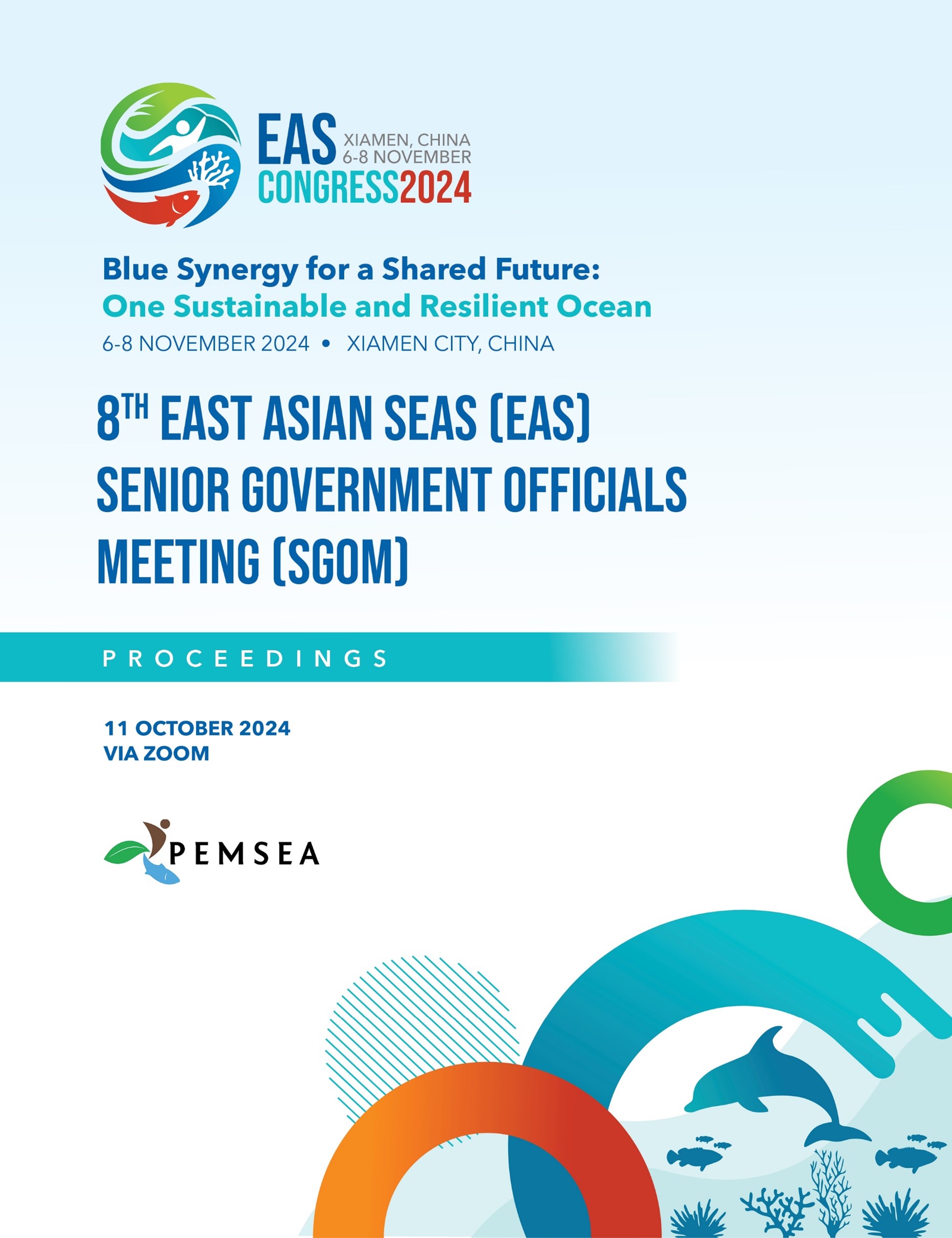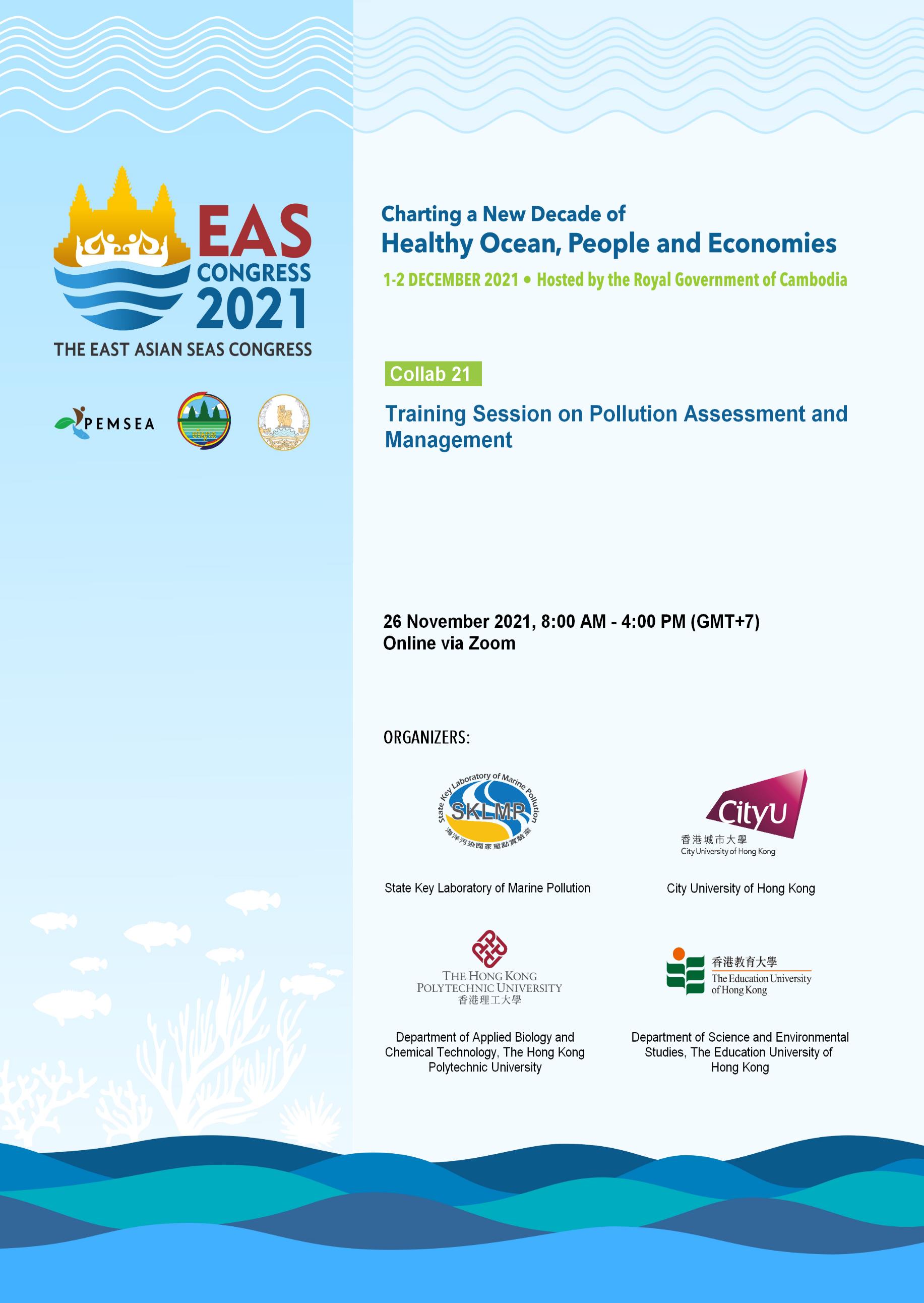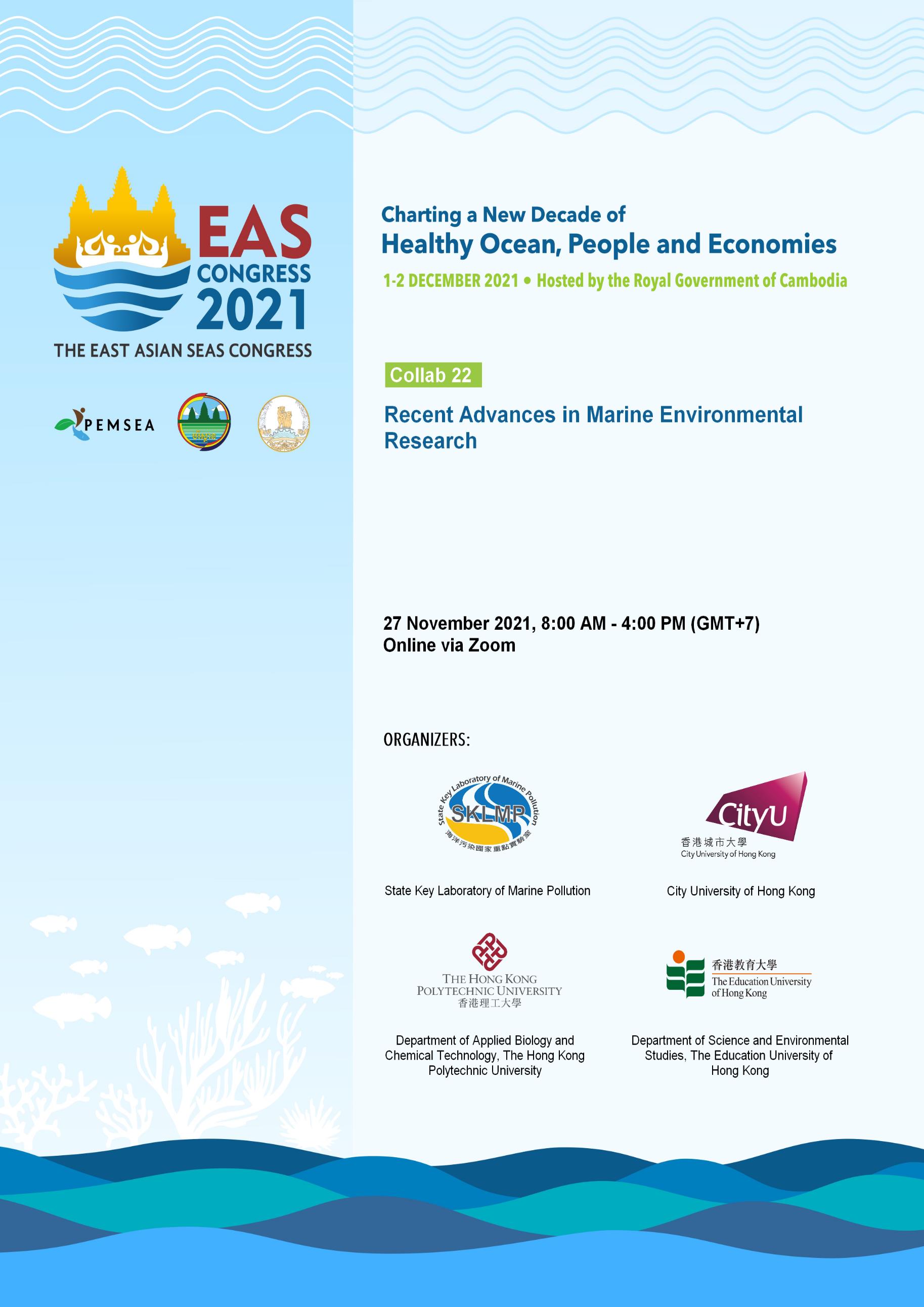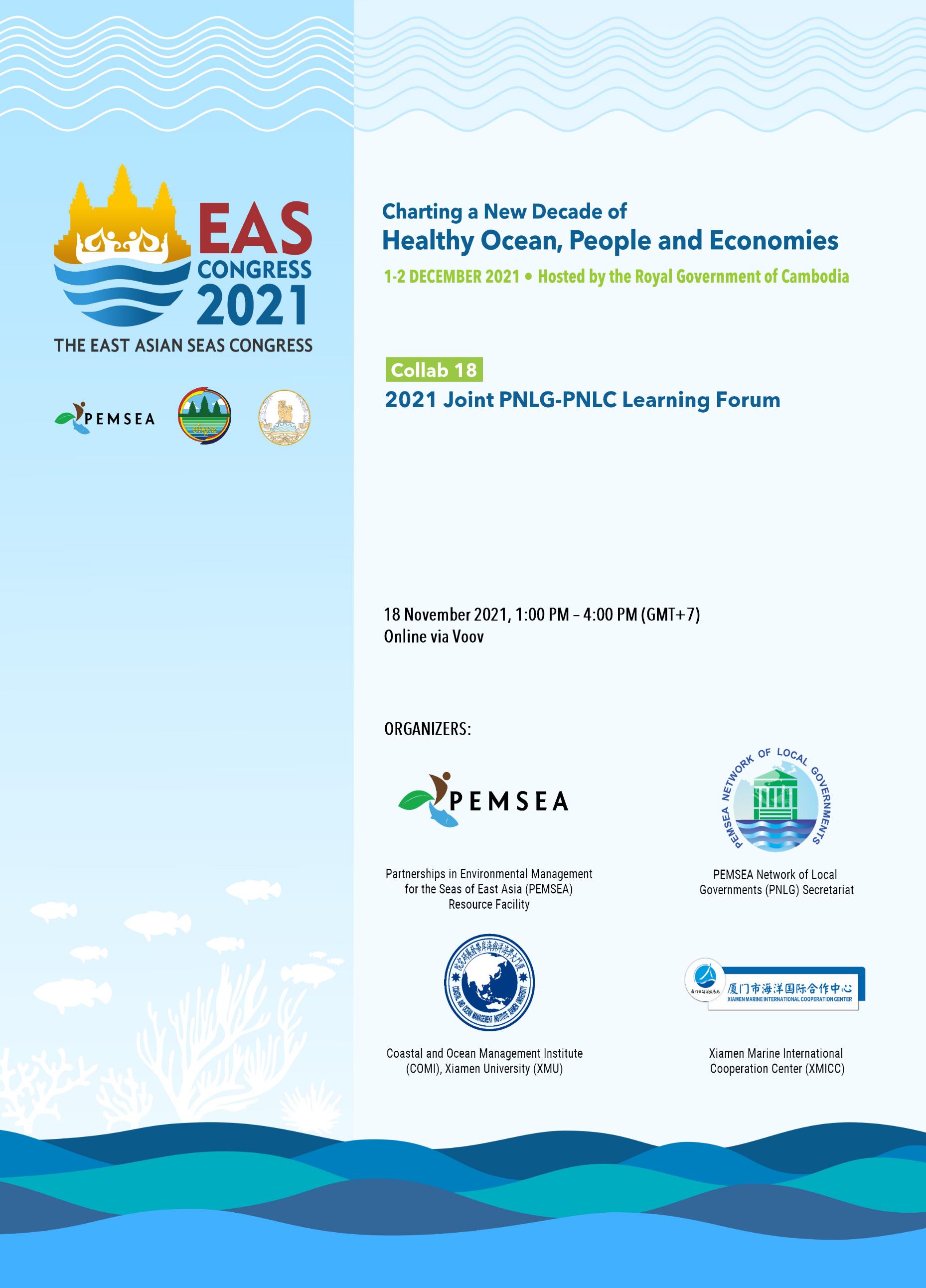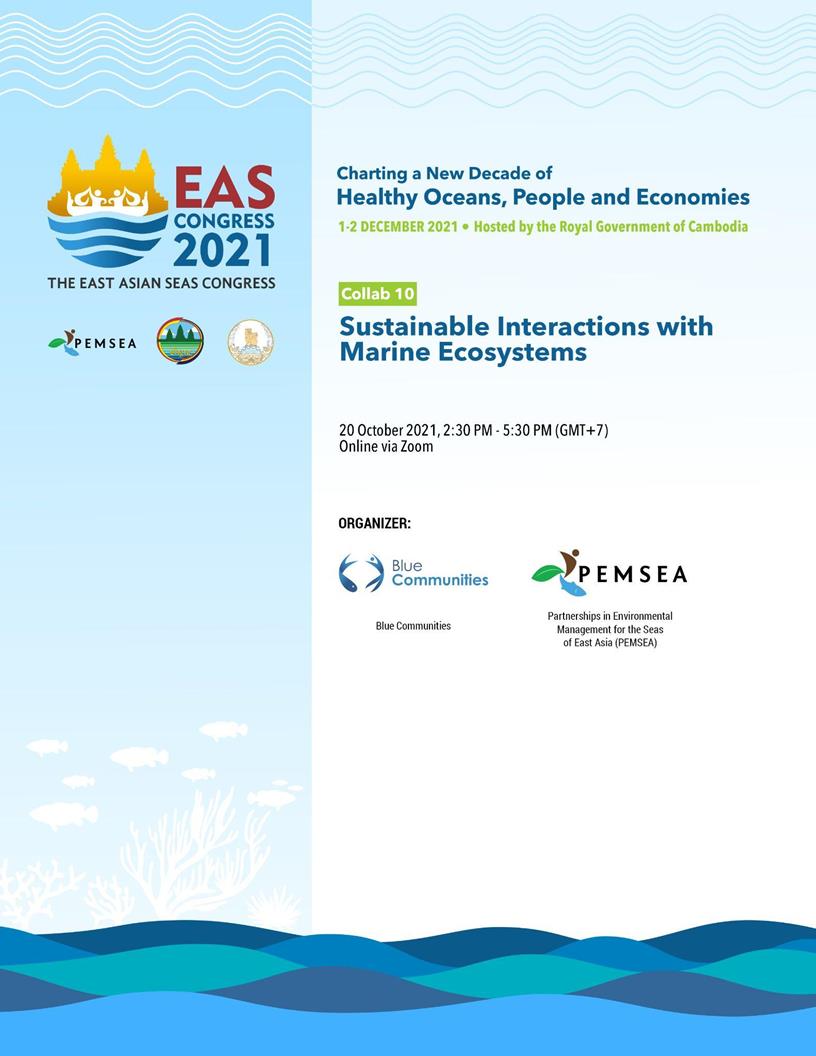
Breadcrumb
8th East Asian Seas (EAS) Ministerial Forum
The 8th East Asian Seas (EAS) Ministerial Forum was held on 6 November 2024 at the Xiamen International Convention Center, PR China, as part of the East Asian Seas Congress 2024. Hosted by the Ministry of Natural Resources of China and organized by PEMSEA, the forum was attended by Heads of Delegation from 10 PEMSEA Country Partners, members of the PEMSEA Executive Committee, representatives from Non-Country Partners, and other collaborators. The event highlighted the key points of the Xiamen Ministerial Declaration, reinforcing commitments to sustainable ocean governance and the implementation of the SDS-SEA.
Yellow Sea Biosphere Conservation Cooperation Proceedings
The Yellow Sea is a maritime area shared by three countries, Republic of Korea, China, and Democratic People's Republic of Korea, and it contributes significantly to social and economic aspects. The Yellow Sea is a crucial habitat for migratory species such as marine mammals and migratory birds. Recently, China and Korea have been making efforts to protect their coastal areas by registering as UNESCO World Natural Heritage sites. Notably, the countries that share the Yellow Sea agree on the necessity for joint cooperation to preserve it. In this session, the policies, actions, and pending tasks of the Republic of Korea and China for Yellow Sea ecosystem conservation will be introduced, along with the discussion.
Training Workshop on Pollution Assessment and Management (PAM)
The PAM training workshop aimed to foster collaboration and knowledge exchange among environmental scientists and practitioners from East Asian Seas countries. With over 20 participants, the event provided a platform for discussing the latest advancements in environmental risk assessment (ERA) and management techniques.
The training session focused on new pollutants, such as per- and polyfluoroalkyl substances (PFASs), antibiotic resistance genes (ARGs), and their impacts on marine ecosystems and public health. Discussions provided participants with a comprehensive understanding of these emerging challenges and equipped them with the knowledge to develop local solutions to global environmental issues. The workshop facilitated active engagement and collaboration, allowing participants to share their experiences and expertise in ERA and environmental management. This exchange of information and best practices was instrumental in enhancing the collective understanding of environmental risks and fostering a collaborative approach to addressing them.Capacity Building Workshop on the Global Estuaries Monitoring (GEM) Programme Proceedings
The Global Estuaries Monitoring (GEM) Programme extended a formal invitation to all existing and potential partners to participate in an exclusive workshop meticulously crafted to provide a comprehensive update on the latest advancements and achievements within the GEM initiative. This workshop serves as a pivotal
platform for attendees to acquaint themselves with ongoing projects within GEM, delve into the innovative development of passive samplers, and collaboratively design the forthcoming phase of the GEM Programme.
Throughout this workshop, participants can expect:
- Detailed updates on the progress and notable achievements of the GEM Programme.
- Insightful sessions focusing on the groundbreaking development of novel passive samplers.
- Engaging discussions aimed at collectively shaping the future trajectory of the GEM Programme.
Prospective attendees were warmly encouraged to join this significant event, where
knowledge-sharing, exploration, and collaborative planning converge to steer the
Global Estuaries Monitoring Programme towards heightened success and impact.8th East Asian Seas (EAS) Senior Government Officials Meeting (SGOM)
The Eighth East Asian Seas (EAS) Senior Government Officials’ Meeting (SGOM) was held on 14 October 2024 via Zoom. Senior Government Officials from 10 PEMSEA Country Partners participated in the meeting, namely: Cambodia, PR China, Indonesia, Japan, Lao PDR, Philippines, RO Korea, Singapore, Timor-Leste and Viet Nam. The PEMSEA Resource Facility (PRF) served as the Secretariat for the Meeting.
Collab 21: Training Session On Pollution Assessment And Management (PAM)
The training covered the concept, principles, and best practices in environmental risk assessment and management of chemical contaminants in water bodies from the standpoint of prospective, retrospective, and tiered approaches. The training also provided an overview of frontier technologies in monitoring and assessment of marine pollution.
Collab 22: Symposium On Recent Advances In Marine Environmental Research
With the goal of paving the way for capacity-building and research collaboration in Asia-Pacific, this symposium featured a series of talks on recent advances in pollution monitoring and control technologies, environmental risk assessment of emerging chemicals of concern, and ecological restoration through the eyes of leading experts from Hong Kong. Particular attention was given to toxins or man-made substances that pollute the ocean or affect its living biodiversity.
Collab 18: 2021 Joint PNLG-PNLC Learning Forum
Close to three decades of developing, implementing, and verifying the effectiveness of integrated coastal management (ICM) in terms of socioeconomic and environmental benefits have driven the replication and scaling up of ICM, covering more coastlines in the various countries in the East Asian Region. The replication and scaling up efforts were made possible with the issuance of necessary policies and supporting legislations by several countries in the region to support ICM implementation.
As scaling up efforts continue to accelerate in the coming decade, it is critical that the next generation of coastal managers and practitioners are adept in ICM principles, concept, framework, processes, and tools to enable them to effectively carry out their tasks and contribute to achieving local, national, regional, and global sustainable development targets in line with the United Nations Sustainable Development Goals. This event was also held under the World Ocean Week in Xiamen (XWOW) 2021.
Collab 10: Sustainable Interactions with Marine Ecosystems
The Collab Event organized by the GCRF Blue Communities programme office entitled “Sustainable Interactions with Marine Ecosystems” comprised 2 series of short presentations from project partners from Indonesia, Malaysia, Philippines and Vietnam, who presented their research and findings, each followed by panel sessions and then an opportunity for networking. The research highlighted the challenges faced by coastal communities in four case study sites, three of which are UNESCO Biosphere Reserves, and the fourth is a gazetted Marine Park.
The event brought together key actors from the Southeast Asia region interested in coastal communities and marine resources, academic researchers from Southeast Asia and the United Kingdom, as well as interested parties in marine management and policy. Representatives from each of GCRF Blue Communities 10 partner organizations and institutions were invited to present their work and participate in panel sessions sharing lessons learned from:
● Facilitating collaborative exchange among international partners to deliver and build capacity in interdisciplinary research
● Applying relevant research tools to address the challenges of coastal communities
● Disseminating the research findings to support coastal management decisions, and informing future efforts
This event provided a forum for the presentation and discussion of:
● The ecosystem services from natural capital in the Southeast Asia region
● Predicted changes in marine resources due to climate change, and how to prepare for the changes
● Trade-offs between conflicting demands on marine resources from different users
● Links between the marine coastal environment, ecosystems and human health
● Strategies for effective communication with, and engagement of stakeholders




